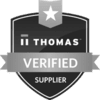Solar panels are an important source of renewable power, taking the sun’s energy and converting it into usable electricity. Generally, these photovoltaic (PV) panels or modules have a metal frame and a glass casing over a semiconductor material like silicon.
When sunlight hits the surface of these modules, photons of light release electrons from the semiconductor material layers, generating electricity in the form of direct current (DC). The wiring within the panels collects energy from this PV process, and an inverter transforms the DC current into alternating current (AC) for immediate or future use. In this blog, we’ll discuss the various layers and materials that make up the anatomy of a solar panel, their function, and how they generate electricity.
Inside Solar Panel Anatomy
To better understand their interiors, picture solar panel layers as a cross-section of a sandwich. The external layers or “bread slices” are made up of protective glass and polymer sheets that insulate a panel’s interior from the elements. Typically, you’ll find a thin cell layer of crystalline silicon between these sheets, as well as layers of charged materials that, together, make up the sandwich “filling.” Encapsulant, typically EVA, acts much like “mayo,” bonding the top sheet, silicon cell, and backsheet together. An aluminum frame binds all the layers together into a single panel.
Different Layers of a Solar Panel
Inside a solar panel, there are individual solar cells — typically 60, 72, or 90 in all — of layered silicon, phosphorus, and boron. Each of these three materials plays an important role. A wafer of silicon serves as the semiconductor. The phosphorous has a negative charge, while the boron’s charge is positive. As photons in sunlight excite a solar panel’s surface layers, electrons release throughout its interior layers, producing the electrical field for energy generation through the separation of these opposing charges.
Solar Panel Backsheets vs. Top Sheets
Solar panels incorporate backsheets and top sheets, as follows:
- Backsheets. Backsheets are polymer-based layers that sit at the back of a solar panel; they’re the bottom piece of bread in the solar panel sandwich. The backsheets provide a protective barrier between the internal circuitry of the panel and the environmental conditions that could otherwise damage it.
- Top sheets. Historically, top sheets were made of glass, but companies are experimenting with various materials to protect the internal cells from the elements. A wide array of top sheet structure options are available, depending on the necessary strength and related requirements of the application.
Solar Panel Encapsulants
Various encapsulants can be chosen for your lamination based on the requirements of the application: optical clarity, electrical insulation, mechanical strength, insulation and protection of the silicon cell, and environment. EVA has been the most common encapsulant in the PV solar industry, but many others are gaining popularity.
OEM Contract Manufacturing for Solar Panels by Bent River
All the elements inside of a solar panel work together to effectively generate clean energy. By partnering with a contract manufacturer with an in-depth understanding of the anatomy of a solar panel, you help ensure that your completed modules utilize the right materials, layers, and structural designs to suit the needs of your application and optimize performance.
The team at Bent River Machine can help guide you through the production process. Since 1978, our company has offered design and engineering, fabrication and manufacturing, and mechanical and electrical assembly services to deliver high-quality product solutions. Our contract manufacturing and lamination services allow us to efficiently create terrestrial or extraterrestrial solar panels. We also contract with clients in need of lamination assistance in the commercial, medical, defense, technology, and semiconductor markets, among others.
Making anything from prototypes and parts to sub-assemblies and turnkey products, we aim to be your single-source provider for OEM contract manufacturing, systems integration, automation solutions, and factory tooling. We also complete manufacturing assessments and offer an array of value-added services such as procurement and subcontracting through our network of vetted component and service providers.
To discover the Bent River difference, request a quote and speak with one of our representatives about our solar panel fabrication capabilities today.




Comments are closed